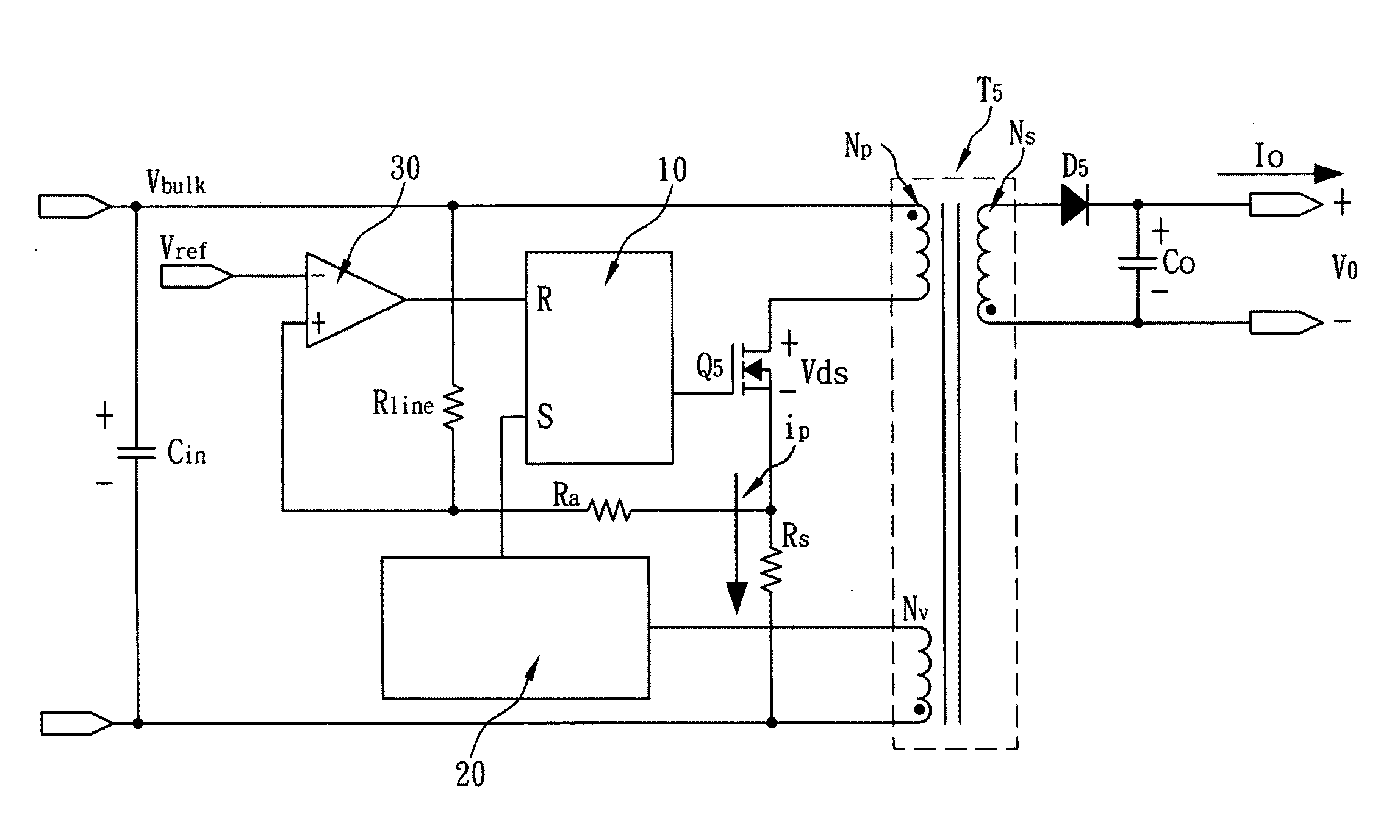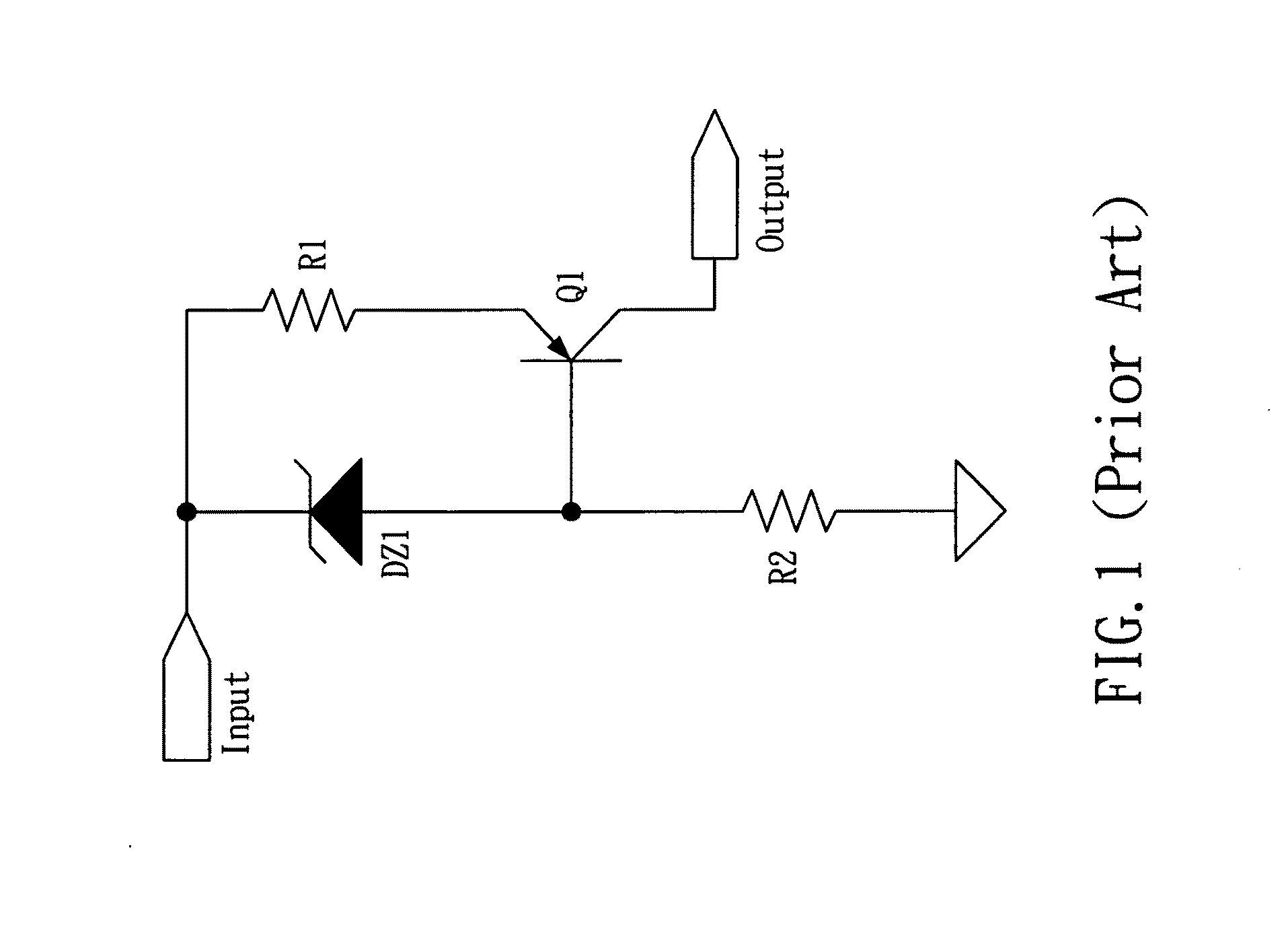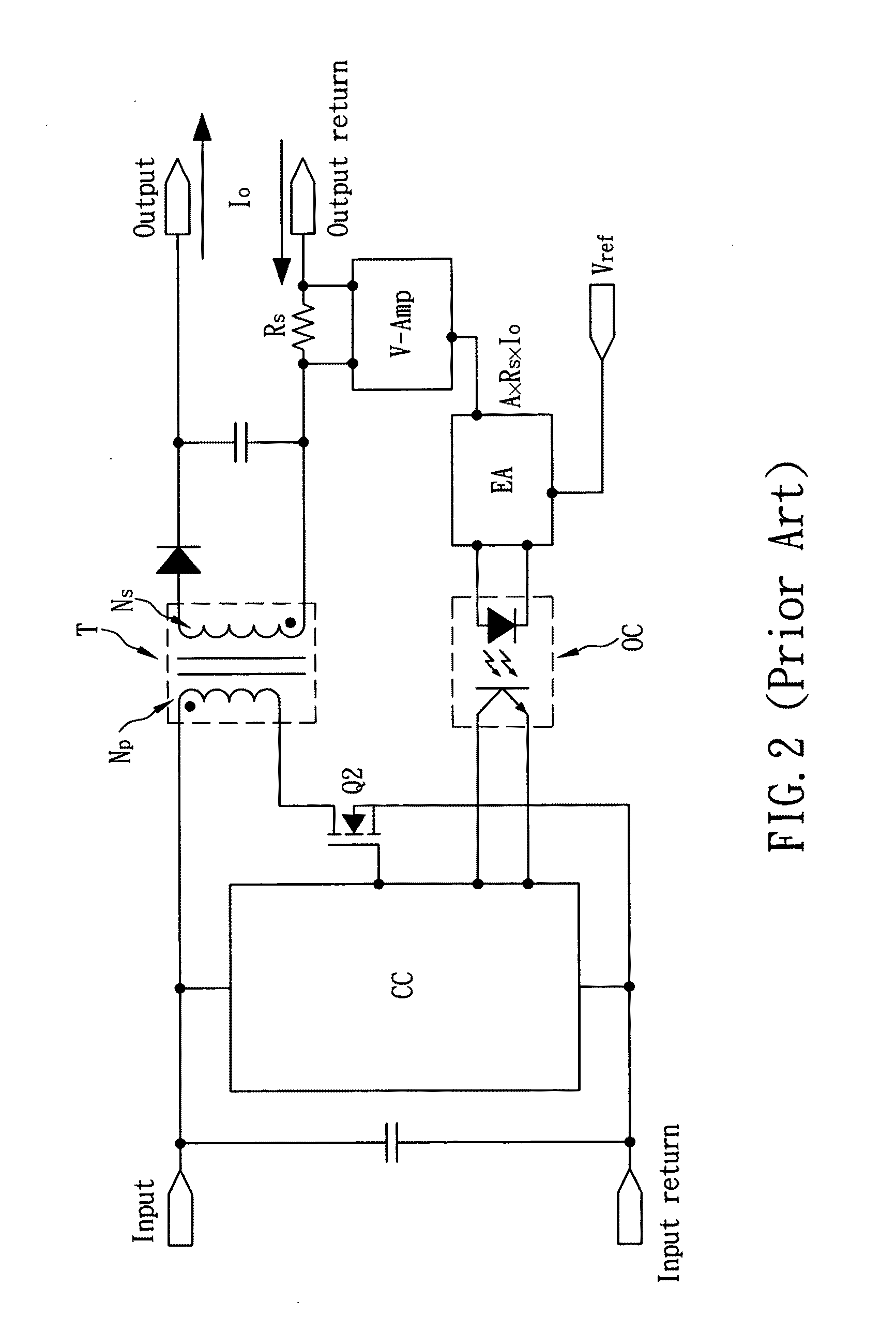Constant-current circuit capable of voltage compensation and zero-voltage switching
- Summary
- Abstract
- Description
- Claims
- Application Information
AI Technical Summary
Benefits of technology
Problems solved by technology
Method used
Image
Examples
Embodiment Construction
[0032]The present invention provides a constant-current circuit which is capable of voltage compensation as well as zero-voltage switching and is applicable to an LED-based lighting apparatus as an LED driving circuit whose output current stays constant. Referring to FIG. 9, the constant-current circuit is a single-switch isolated flyback converter operating in current mode and essentially includes a transformer T5, an input-voltage filter capacitor Cin, a linear resistor Rline, an auxiliary resistor Ra, an RS latch 10, a detection circuit 20, a comparator 30, a primary-side power switch Q5, a sensing resistor RS, a secondary-side power diode D5, and an output-voltage filter capacitor Co. The positive and negative electrodes of the input-voltage filter capacitor Cin are connected across the positive and negative ends of an input voltage Vbulk. The transformer T5 is operated in transition mode rather than constant-frequency DCM and includes a primary winding NP, a secondary winding N...
PUM
 Login to View More
Login to View More Abstract
Description
Claims
Application Information
 Login to View More
Login to View More - R&D
- Intellectual Property
- Life Sciences
- Materials
- Tech Scout
- Unparalleled Data Quality
- Higher Quality Content
- 60% Fewer Hallucinations
Browse by: Latest US Patents, China's latest patents, Technical Efficacy Thesaurus, Application Domain, Technology Topic, Popular Technical Reports.
© 2025 PatSnap. All rights reserved.Legal|Privacy policy|Modern Slavery Act Transparency Statement|Sitemap|About US| Contact US: help@patsnap.com



